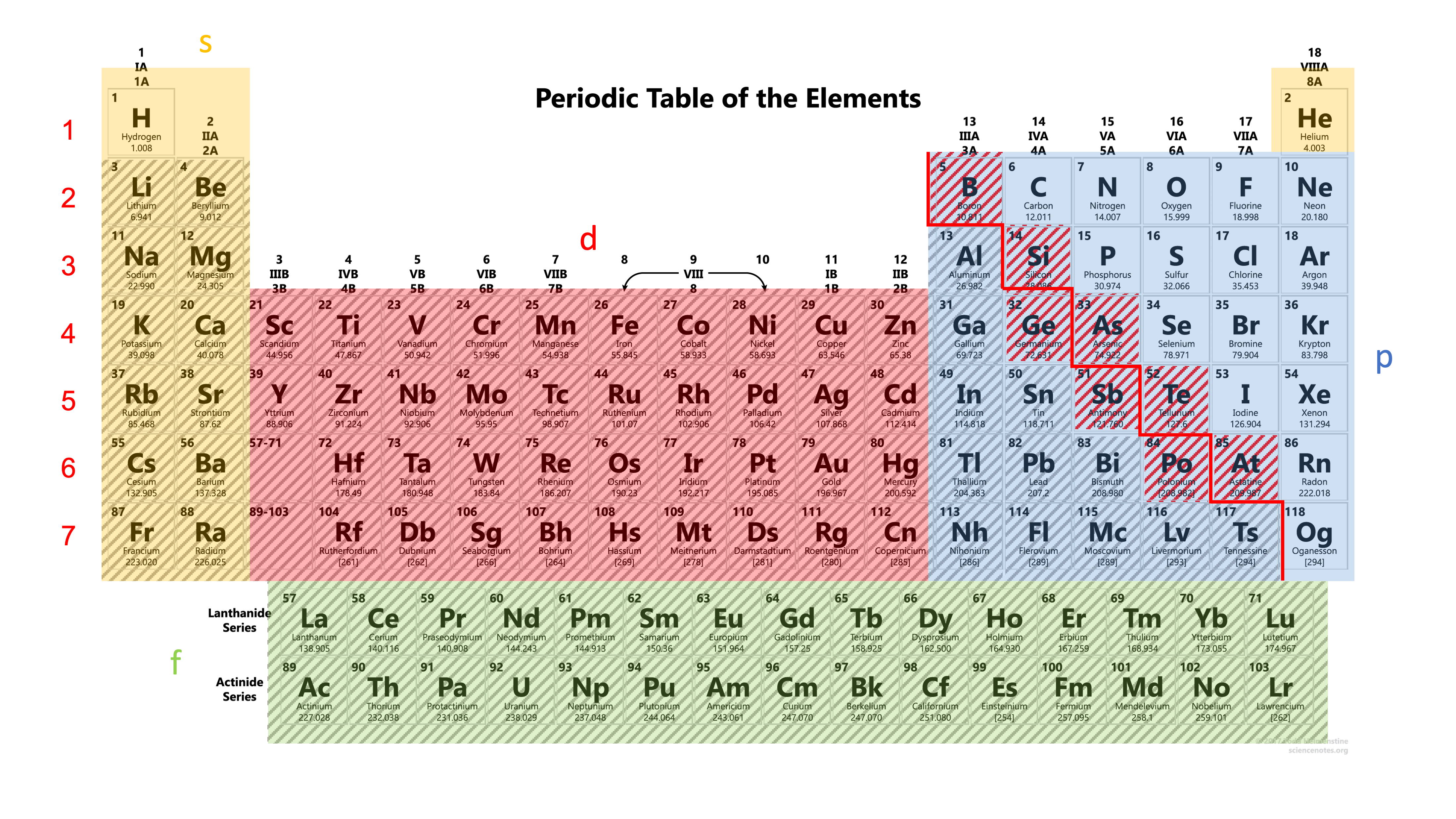We first encountered the periodic table when we learnt about protons. We didn't go into too many details though. But never think of a periodic table as a simple summary of all elements only, it is in fact more informative than you might have thought. In the next few posts, we'll talk about some of the informations you could extract from the periodic table. Let's start by getting to know some basic terms.
Basic terms
Below is the periodic table that you may already be familiar with. We'll discuss some terms here with the help of the highlights.
Periodic table
First of all, a periodic table lists all elements in the sequence of increasing atomic numbers of the elements. The elements are then arranged into periods and groups.
Period: a horizontal row in the periodic table is a period. Properties of elements change gradually across each period and periodically between different periods.
The periodic number indicates the outermost energy level being occupied by the atom's electrons (the valence shell).
Group: a vertical column in the periodic table with elements of similar properties.
In the periodic table, groups 1, 2, and 13 to 18 are the main groups which are numbered separately from other groups with a capital letter A appended. For example, group 13 is written as group 3A by continuing from group 2 (or more precisely group 2A) and skipping groups 3 to 12.
For elements in the main groups, the group number is equal to the total number of valence electrons in the atom.
On the other hand, groups 3 to 12 consist of transition metals, which include the entire f block at the bottom. The names of the transition metal groups are appended with a letter B in order to differentiate from the main groups.
Do take note that the group numbers of transition metals do not tell you the numbers of their valence electrons.
Groups 1A and 2A, and element helium (He) in group 8A make up the s block (highlighted in yellow).
Groups 3A to 8A excluding helium make up the p block (highlighted in blue).
The d block consists of transition metals excluding those with atomic numbers from 57 to 71 and from 89 to 103 (as highlighted in red).
Elements with an atomic number in 57 to 71 or in 89 to 103 are considered to be in the f block (highlighted in green).
To be more specific, elements with an atomic number ranging from 57 to 71 are named as lanthanides, while those from 89 to 103 are the actinides.
The blocks indicate the most energetic subshell that the elements' valence electrons are in. For example, V (\( Z=23 \), period 4, group 5B, d block) has an electron configuration of \( [Ar]4s^23d^3 \) with the 3d orbitals being the most energetic orbitals that are filled with electrons. Moreover, the outermost energy level (although not the orbital with the highest energy) that has electrons in is level 4 because of the 4s orbital being filled, so that vanadium is placed in period 4.
In the periodic table, metals (shaded in grey) are placed on the left of the periodic table except hydrogen (H), whilst non-metals (without any shades) are on the right-hand side of the table. The boundary that separates metals and non-metals apart is shown as the red staircase in the periodic table above.
However, those elements that are right next to the staircase may exhibit both the properties of metals and non-metals, therefore, they are named as metalloids (shaded in red).
Some groups may have a name for easy identification. For example, elements in group 1A are named as the alkali metals, group 2A the alkaline earth metals, group 7A the halogens, and group 8A the noble gases.
You should be familiar with these terms and the location of some common elements such as the alkali metals, alkaline earth metals, halogens, noble gases, the non-metals in period 2 and 3, and those transition metals in period 4. This would save you some time to locate the elements when necessary.
Practice questions
- How many energy level(s) does electrons in bromine (Br) occupy?
- What is the most energetic sublevel that electrons in a cobalt (Co) atom occupy?
- Without writing the electron configuration, how many valence electrons does a nitrogen (N) atom have?
- Which of the two elements has similar properties to lithium (Li), potassium (K) or scandium (Sc)?
- Why is silicon (Si) widely used in the semi-conductor industry?
- From the following two facts, and the locations of copper (Cu) and oxygen (O) in the periodic table, can you suggest a main difference between these two elements?
- copper is used in electrical wires;
- we won't feel the electricity in the sockets even though air (containing nitrogen \( N_2 \) and oxygen \( O_2 \) gases) flows between us and the sockets
